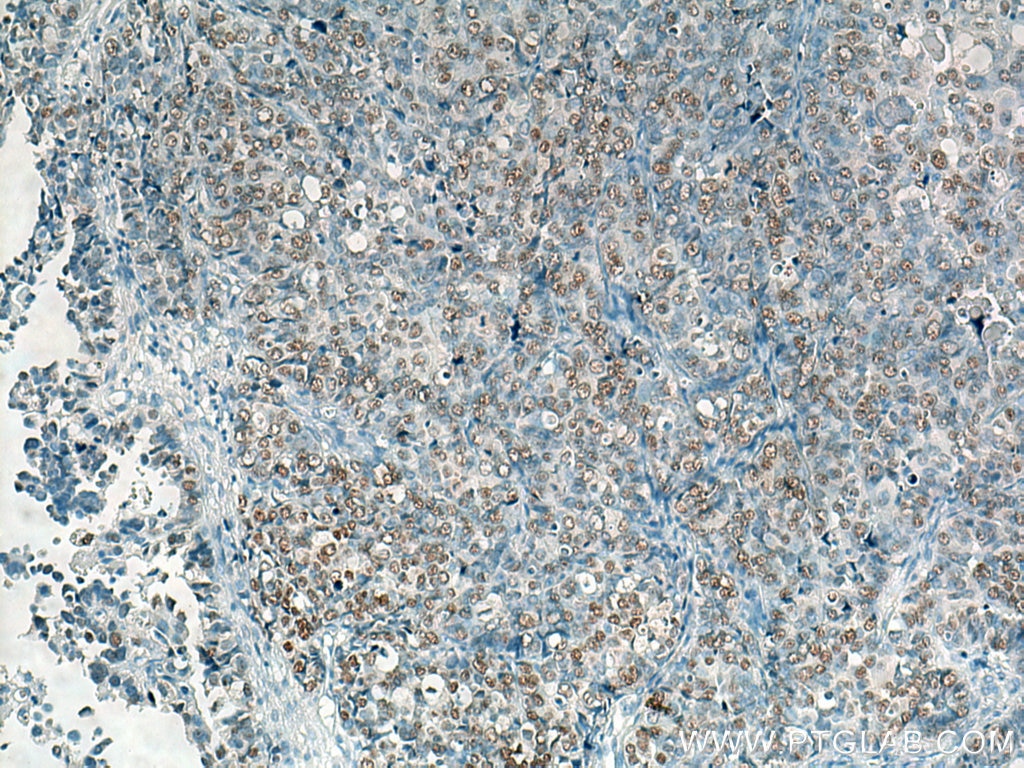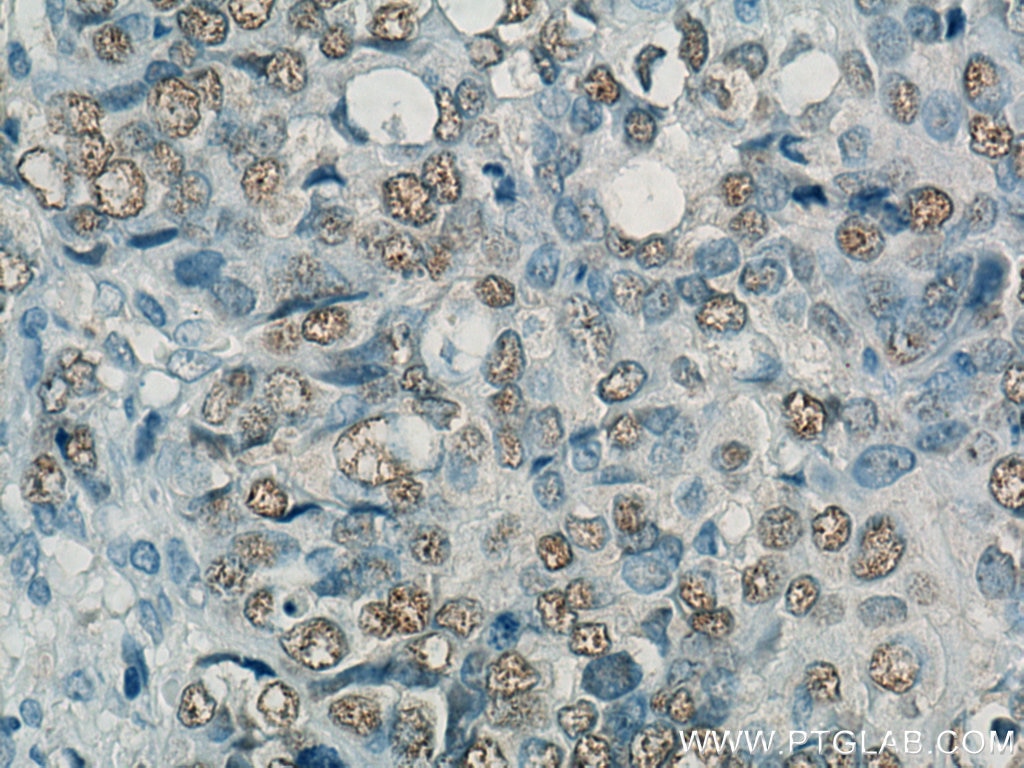Heavy chain of Rabbit IgG Monoklonaler Antikörper
Heavy chain of Rabbit IgG Monoklonal Antikörper für IHC
Wirt / Isotyp
Maus / IgG1
Getestete Reaktivität
Kaninchen
Anwendung
IHC
Konjugation
Biotin
CloneNo.
1C9A5
Kat-Nr. : Biotin-66467
Synonyme
Galerie der Validierungsdaten
Geprüfte Anwendungen
| Erfolgreiche Detektion in IHC | humanes Ovarialkarzinomgewebe Hinweis: Antigendemaskierung mit TE-Puffer pH 9,0 empfohlen. (*) Wahlweise kann die Antigendemaskierung auch mit Citratpuffer pH 6,0 erfolgen. |
Empfohlene Verdünnung
| Anwendung | Verdünnung |
|---|---|
| Immunhistochemie (IHC) | IHC : 1:50-1:500 |
| It is recommended that this reagent should be titrated in each testing system to obtain optimal results. | |
| Sample-dependent, check data in validation data gallery | |
Produktinformation
Biotin-66467 bindet in IHC Heavy chain of Rabbit IgG und zeigt Reaktivität mit Kaninchen
| Getestete Reaktivität | Kaninchen |
| Wirt / Isotyp | Maus / IgG1 |
| Klonalität | Monoklonal |
| Typ | Antikörper |
| Immunogen | Protein |
| Vollständiger Name | Heavy chain of Rabbit IgG |
| Gene symbol | |
| Gene ID (NCBI) | |
| Konjugation | Biotin |
| Form | Liquid |
| Reinigungsmethode | Protein-G-Reinigung |
| Lagerungspuffer | BS mit 50% Glyzerin, 0,05% Proclin300, 0,5% BSA, pH 7,3. |
| Lagerungsbedingungen | Bei -20°C lagern. Vor Licht schützen. Nach dem Versand ein Jahr stabil. Aliquotieren ist bei -20oC Lagerung nicht notwendig. 20ul Größen enthalten 0,1% BSA. |
Hintergrundinformationen
This antibody specifically recognizes the heavy chain of Rabbit IgG.
Protokolle
| Produktspezifische Protokolle | |
|---|---|
| IHC protocol for Biotin Heavy chain of Rabbit IgG antibody Biotin-66467 | Protokoll herunterladen |
| Standard-Protokolle | |
|---|---|
| Klicken Sie hier, um unsere Standardprotokolle anzuzeigen |
Publikationen
| Species | Application | Title |
|---|---|---|
Exp Ther Med CLCA2 suppresses the proliferation, migration and invasion of cervical cancer. | ||
Cancer Biol Ther EGR1-induced upregulation of lncRNA FOXD2-AS1 promotes the progression of hepatocellular carcinoma via epigenetically silencing DKK1 and activating Wnt/β-catenin signaling pathway. |



